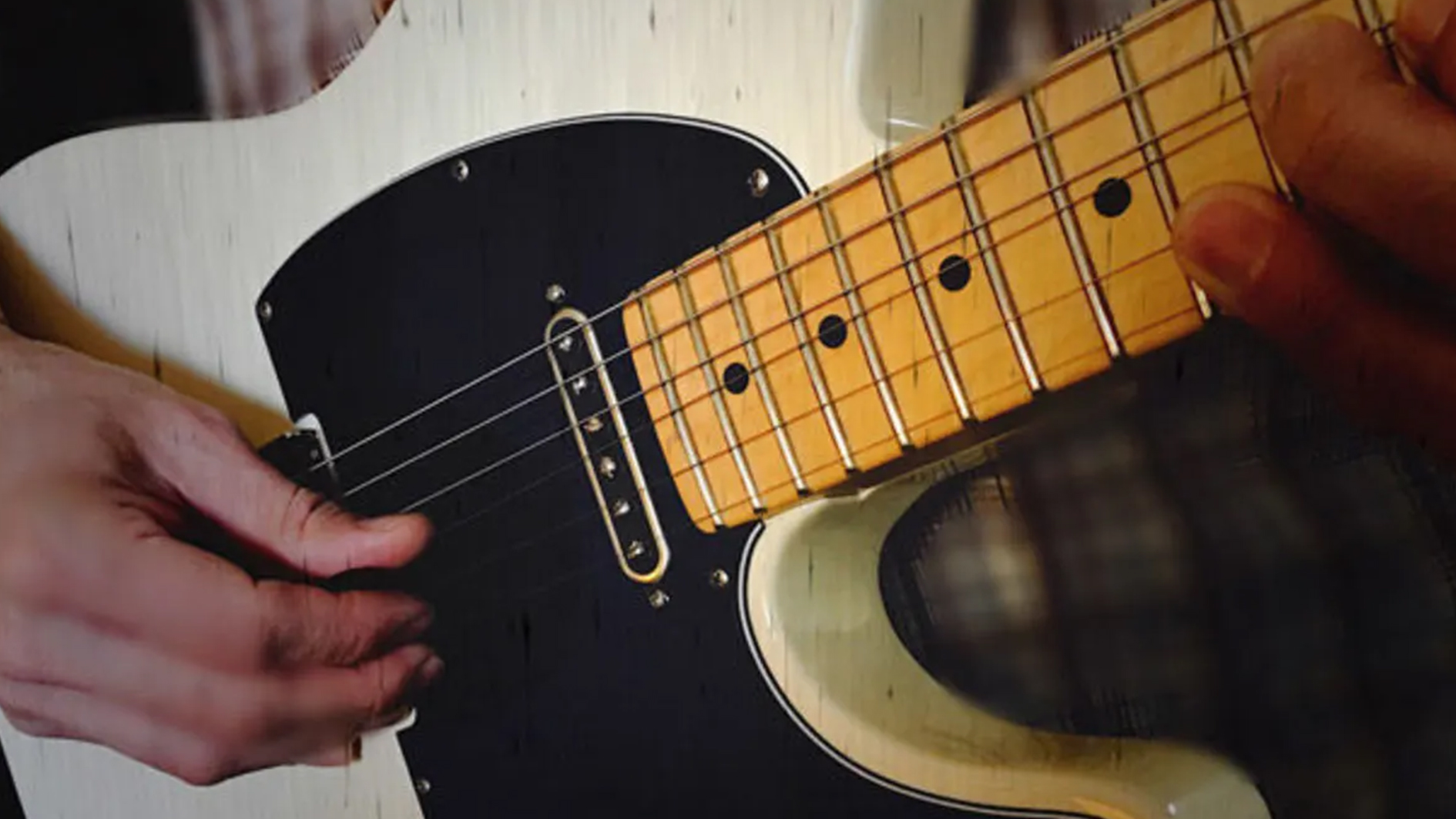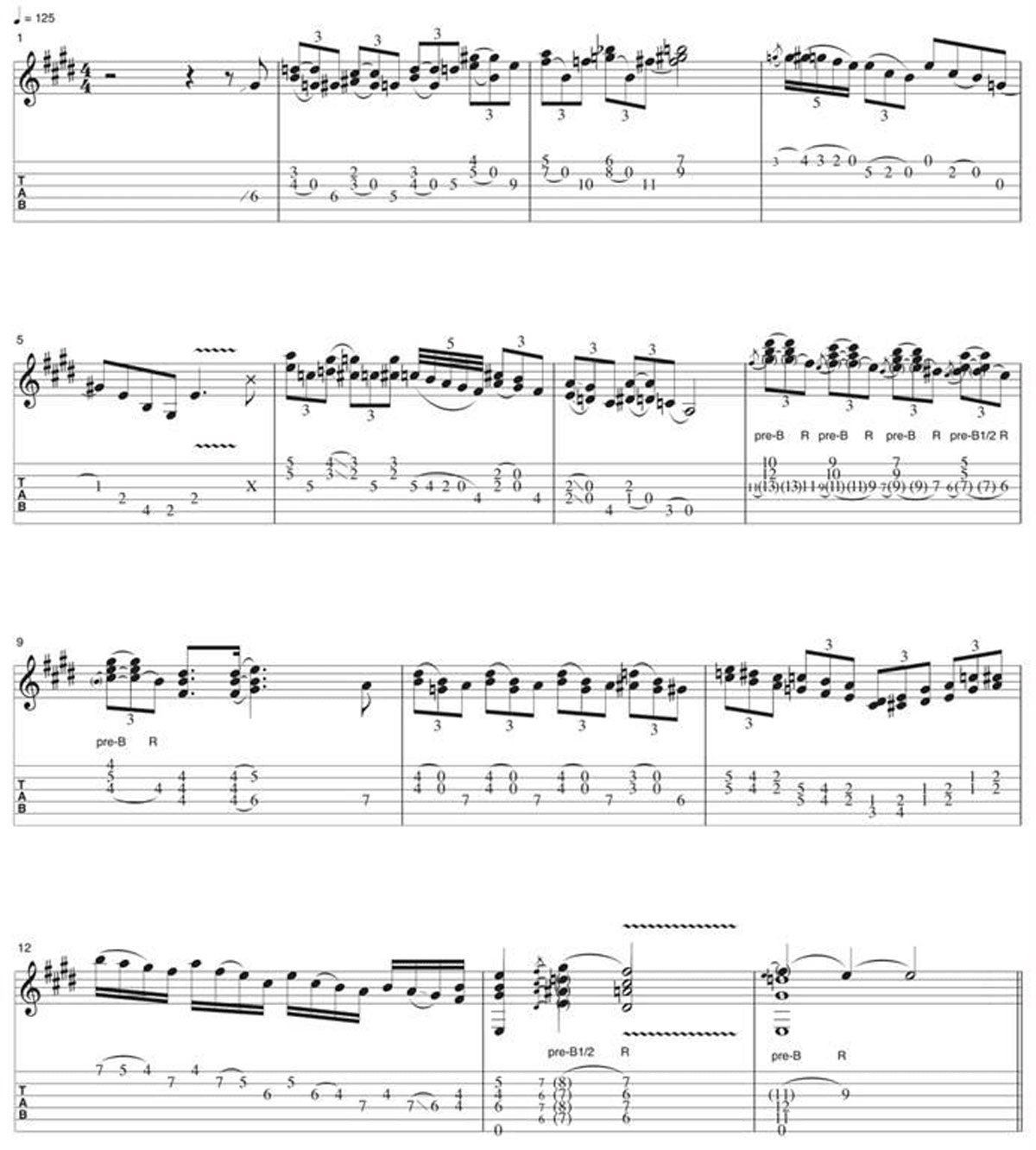
Although I started assembling my country stylistic skills pretty early on in my guitar playing quest, I did not grow up listening to country music. In fact, I remember being troubled by the show Hee Haw, in that the humor, the music and the overall zeitgeist seemed to escape me. My proclivity for Jimi Hendrix, Scooby Doo and Kolchak: The Night Stalker at a very young age might have tainted my filter for enjoying the folksy good times offered by the likes of Hee Haw.
It wasn’t until I heard Albert Lee play on the Eric Clapton live record called Just One Night that my veering into the country lane began. I remember thinking, as I heard Albert solo on “Cocaine” and “Further On Up the Road,” that knowing just the blues scale was not going to cut it if I wanted to play the kinds of things I was hearing him play.
In fact, three English gentlemen first stoked my desire to learn chicken pickin’ and country-style playing: the aforementioned Albert Lee, Dire Straits’ Mark Knopfler and Ray Flacke, whose incendiary playing on the Ricky Skaggs’ Highways and Heartaches record really caught my attention. Digging into these fellas more, I was led to James Burton, Chet Atkins, Jerry Reed and Jimmy Bryant.
At around the same time I discovered the country roots, I got sideswiped by Roy Buchanan and Danny Gatton, which really sent me on a needle-dropping rampage with my phonograph sequestered in the fledgling Gristle Cave.
I quickly came to the conclusion that to be conversant in contemporary country guitar, one had to know how to effectively chicken pick, have a sense of bluegrass phrasing, a grasp of western swing comping and soloing, a grab bag of Merle Travis and Chet skills and a good blues/rock vocabulary.
I also came to the realization through my examination of country stylings that all the styles were closely interwoven and that it was enjoyable to recycle ideas from one genre to the next by just changing the phrasing or adding some stylistic nuances.
The following example is based on a blues and is a “country sampler” of the various things I have borrowed from others and have tried to creatively recycle, for “the kids.”
All the latest guitar news, interviews, lessons, reviews, deals and more, direct to your inbox!
In the opening three bars lurks a variation of a lick I first heard Albert Lee do, but later on, I connected the dots back to Chet Atkins who, most likely, was influenced by Django Reinhardt. I added some chromaticism to make it a little more twisted. The lowest note is always picked while the double-stops on the higher strings are plucked using your middle and ring fingers.
The 4th bar includes a half-step prebend, which is one of my calling cards along with some open-string pull-offs.
Bars 6 and 7 are very Albert Lee-ish and the double-stops are picked with the fingers, whilst the pick hits the single notes.
The G string is pre-bent for the first notes of each triplet in bar 8. The pick is used on the G string while fingers are used to pluck the B and E strings. This is not easy but it comes with practice, diligence and sticktoitiveness.
Bar 11 involves double-stops that are alternate picked between fingers and pick. The overlapping of the strings being plucked with the fingers and the use of the pick gives a chicken-picked-type sound. I always lead with the fingers, so the first double-stop of the triplet I play with my middle finger on the G string and ring finger on the B string followed by the double-stop with the pick and so on.
Bar 12 is a cascading, descending steel-type lick in which I start each of the sixteenth-note groupings with my middle finger on my picking hand, while the pick does the rest. If you allow the last note of each sixteenth-note grouping to ring a little longer it really accentuates the cascading steel effect.
The pre-bent chord in bar 13 is something I borrowed from James Burton. I take a B9 chord with D# in the bass (or think of it as a Ebm7b5) and pre-bend it a half-step, strum it and then resolve it by unbending it. It’s super sneaky.
In the last measure I do one of my favorite steel bends, but I use a volume swell, which is achieved by bringing the volume down on the guitar with my pinky, strumming the chord and then bringing the volume up to give it the swell “swell” effect.
There you have it! I hope you enjoy these country tidbits!

